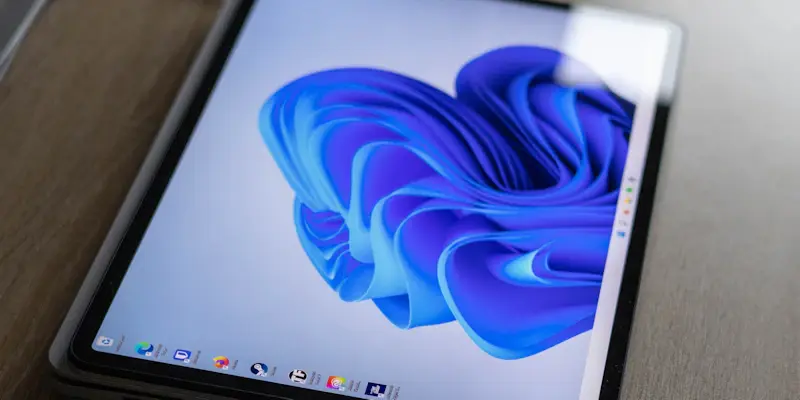The ongoing effort to update computers to Windows 11 24H2 has encountered new impediments: an audio bug and an Auto HDR glitch. Microsoft has confirmed two significant issues: one associated with Dirac Audio and another with Auto HDR, both of which have resulted in the implementation of a compatibility safeguard hold to stop automatic updates to Windows 11 24H2. The company also advises against manual upgrades due to the seriousness of these issues.
Audio Bug Cripples Devices
Dirac Audio Issue Explained
The audio issue affects devices equipped with Dirac Audio software utilizing the cridspapo.dll file, causing a complete loss of audio output after upgrading to Windows 11 24H2. Affected devices include those integrated with speakers, Bluetooth speakers, and Bluetooth headsets, which fail to function, and both first-party and third-party applications do not recognize these audio devices. The problem is pervasive enough that it essentially renders any affected device mute. It is an unexpected setback for users who rely on these audio devices daily, making the issue more pressing to resolve.
To mitigate this problem, a compatibility hold has been placed, preventing these devices from upgrading via the Windows Update channel until a new driver is developed to address the issue. Microsoft is actively working on producing the new driver. This fix aims to restore proper audio functionality and ensure that users do not experience any disruptions in their daily activities. The interim solution reflects Microsoft’s commitment to maintaining system stability and user satisfaction, even if it means delaying the widespread adoption of the latest update.
The Impact on Users and Microsoft’s Response
Users affected by the Dirac Audio bug face significant inconvenience, especially those who depend on their devices for communication, entertainment, or work-related tasks. Loss of audio could disrupt professional meetings held remotely, delay projects requiring video conferencing, and hinder leisure activities such as streaming media or playing music. This audio bug raises concerns about the rigorousness of the testing phase before rolling out updates to the general public. Microsoft’s decision to place a compatibility hold is a precautionary measure to prevent exacerbating the issue across more devices.
The company advises users against manually upgrading to Windows 11 24H2 until the issue is resolved. This cautious approach underscores the importance of addressing technical glitches before they cause widespread disruption. Ensuring that a new driver is safely tested before release exhibits a responsible update management strategy. While users wait for the fix, they are encouraged to keep their current system configurations, reducing the risk of encountering the audio problem until the compatibility hold is lifted and the update is safe to install.
Auto HDR Glitch Affects Gaming Experience
Details of the Auto HDR Issue
The second problem involves gaming, where devices with Auto HDR enabled might experience unresponsive games or incorrect game colors under certain display configurations after upgrading to Windows 11 24H2. Auto HDR, a feature designed to improve gaming by converting SDR content to HDR, can cause games to freeze or display colors incorrectly. The implications of this issue are far-reaching for gamers, leading to frustration and a diminished gaming experience. This feature, intended to enhance rather than impede gaming quality, becomes a source of significant trouble when it malfunctions.
A compatibility hold has been applied to prevent affected devices from receiving the Windows 11 24H2 update. Users who updated before the hold should disable Auto HDR to avoid these issues. Disabling this feature can help mitigate the problem temporarily until a more permanent solution is offered. This advice is crucial for maintaining gameplay and overall system stability for users who have inadvertently updated their systems before the issue was broadly identified and addressed.
Challenges and Solutions for Gamers
Gamers who encounter the Auto HDR bug find the issue particularly intrusive, as it impacts their gaming experience directly. Incorrect game colors and freezing can detract from the immersive environment that gaming aims to provide. This problem showcases the delicate balance developers must achieve when introducing new features that interact with varying hardware configurations. Gamers expect consistency and reliability from their systems, and disruptions like this can lead to significant dissatisfaction.
Microsoft’s proactive steps in advising users to disable Auto HDR reflect a keen awareness of the gaming community’s needs and the impact such issues can have. By recommending users disable the feature until a fix is in place, Microsoft helps to preserve the integrity of gaming experiences. Additionally, the company’s continued work to identify and resolve these hardware and software conflicts will ensure that end-users receive updates that enhance, rather than disrupt, their system performance. Reactive measures combined with transparent communication signal a planned approach to problem resolution, maintaining user trust and software reliability.
Future Steps and Resolution
The ongoing effort to upgrade computers to Windows 11 24H2 has hit unexpected snags, namely an audio issue and a problem with Auto HDR. Microsoft has acknowledged these two significant glitches: one involving Dirac Audio and another associated with Auto HDR. As a result of these complications, Microsoft has put a compatibility safeguard in place to prevent automatic updates to Windows 11 24H2. The company strongly discourages users from attempting manual upgrades due to the severity of these problems.
To further elaborate, the issue with Dirac Audio affects sound quality, potentially causing disruptions or lack of functionality in certain applications that rely on audio. The Auto HDR problem affects gamers and users who utilize high-dynamic-range content, leading to subpar visual experiences. These problems are critical enough that Microsoft has halted the update rollout to mitigate any negative impact on user experiences. Users are advised to wait until solutions are found and the issues are resolved to ensure a smooth and stable system upgrade.

